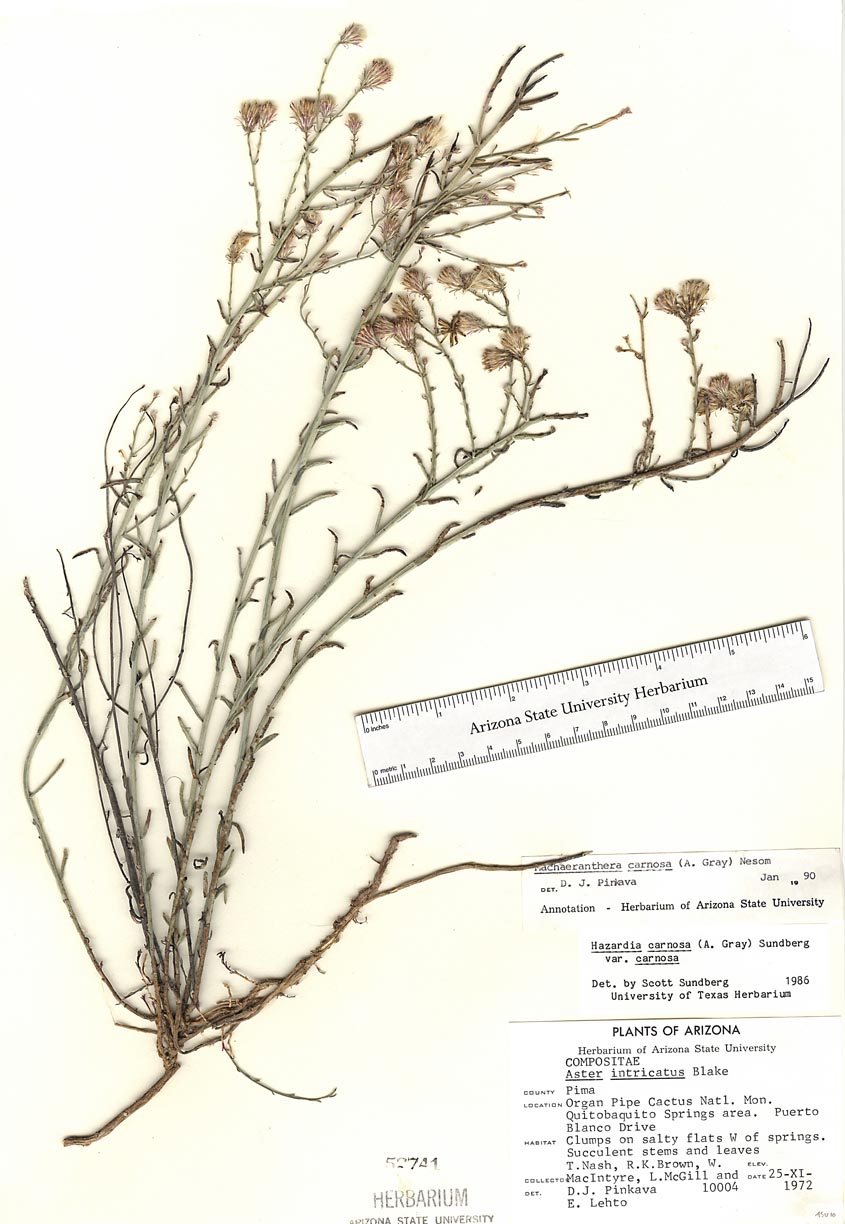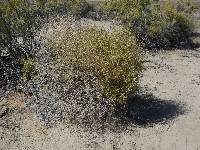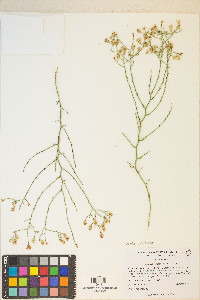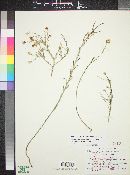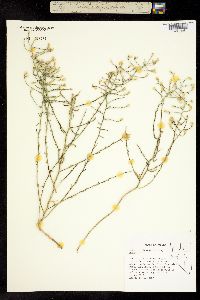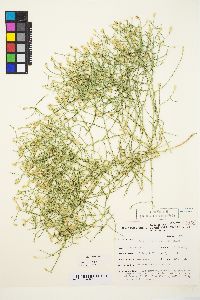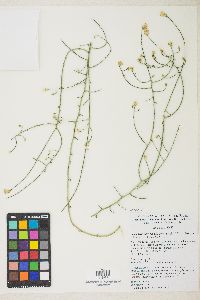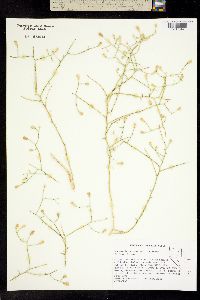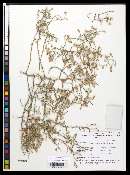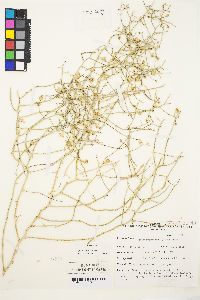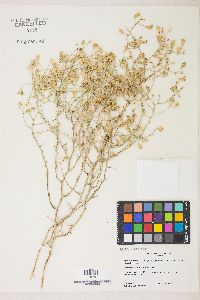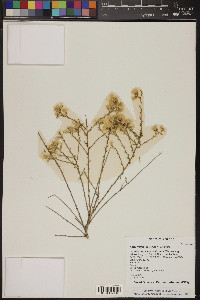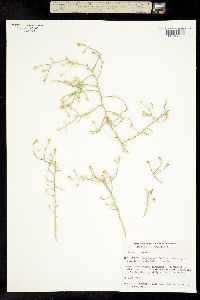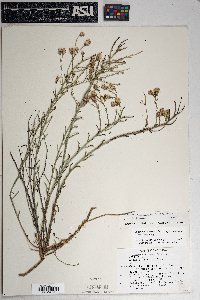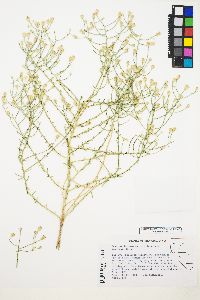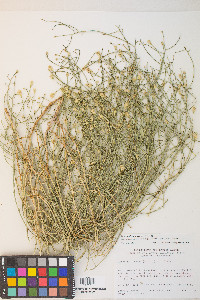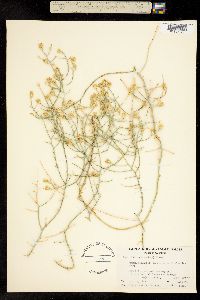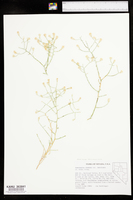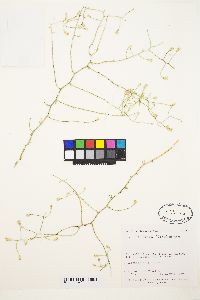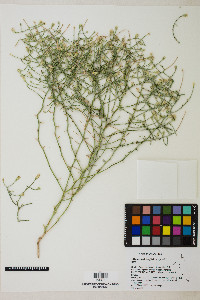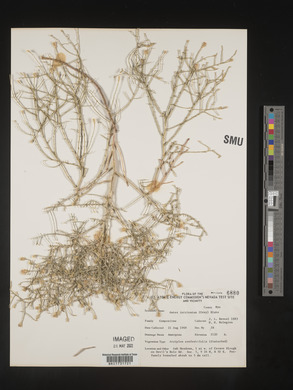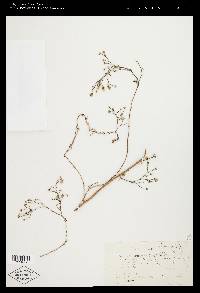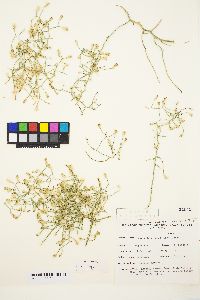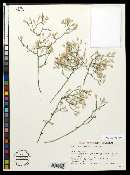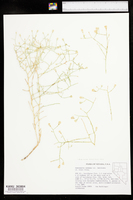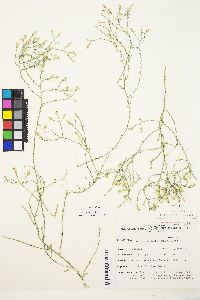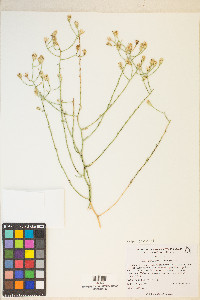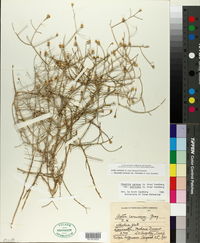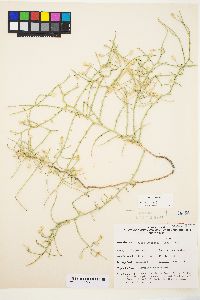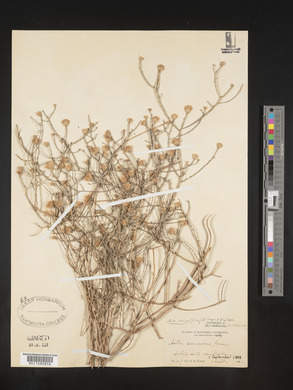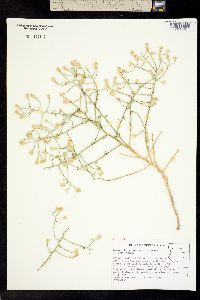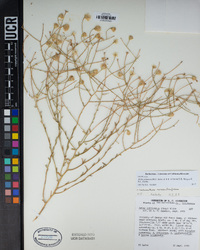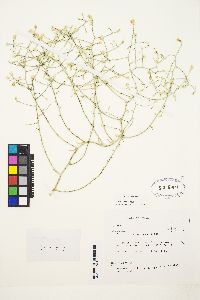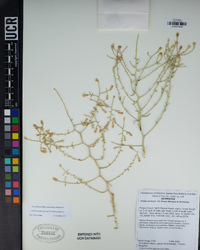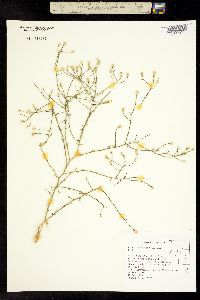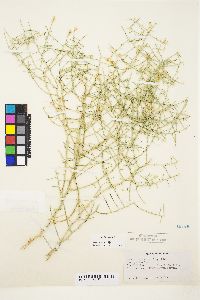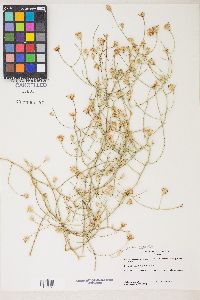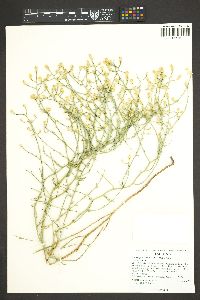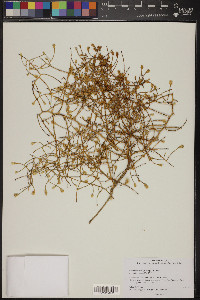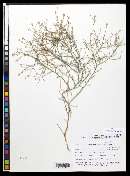Arida carnosa
|
|
|
|
Family: Asteraceae
Shrubby Alkali Desert Tansy-Aster, more...shrubby alkaliaster, shrubby alkaliaster, shrubby alkali aster, shrubby alkali tansyaster
[Aster intricatus (A.Gray) S.F.Blake, moreBigelovia intricata A.Gray, Leucosyris carnosa (Gray) Greene, Leucosyris carnosa var. intricata (A.Gray) A.Cronquist, Linosyris carnosa Gray, Machaeranthera carnosa (A. Gray) G.L. Nesom, Machaeranthera carnosa var. carnosa , Machaeranthera carnosa var. intricata (A.Gray) G.L.Nesom] |
Subshrubs, 10-90 cm (bushy); rhizomes elongate. Stems 1-10+, suberect to reclining or sprawling, slender, repeatedly branched throughout, divaricately so, glabrous, glaucous. Leaves cauline; sessile; proximal blades linear, 10-20 × 2-3 mm, distal greatly reduced, scalelike, (succulent) bases tapered, margins entire, apices apiculate to spinose, faces glabrous. Heads borne singly (terminal), in diffuse, bracteate, cymiform arrays. Involucres 5-7 × 4-7 mm in flower. Phyllaries in 4-5 series, appressed or spreading, lanceolate, 2-8 mm, bases whitish to tan or tan throughout, margins entire to laciniate, apices often green, obtuse to acuminate, faces glabrous. Ray florets 0. Disc florets 12-25+; corollas yellow, 5-6 mm. Cypselae subcylindric, 2.5-3 mm, 7-9-nerved per face, faces sparsely sericeous; pappi whitish, setose, 4-6 mm. 2n = 10. Flowering Aug-Sep. Alkaline flats, canyons, meadows; 100-1600 m; Ariz., Calif., Nev.; Mexico (Sonora). Arida carnosa is recognized by its subshrubby habit, glabrous, glaucous, and succulent stems, reduced scalelike leaves, and absence of ray florets. It occurs in or around alkaline salt flats, where it is associated with other salt-tolerant genera such as Sarcobatus, Distichlis, and Atriplex.
FNA 2006 Duration: Perennial Nativity: Native Lifeform: Subshrub General: Subshrubs 10-90 cm high, bushy, stems 1-10 or more, suberect to reclining or sprawling, slender, divaricately and repeatedly branching throughout, herbage glabrous to glaucous, plants arising from elongate rhizomes. Leaves: Alternate, sessile, proximal blades linear, 10-20 mm long and 2-3 mm wide, upper leaves becoming greatly reduced, succulent and scalelike, with tapered bases, margins entire, apices apiculate to spinose, surfaces glabrous. Flowers: Yellow, discoid, disk flowers 12-25 or more, 5-6 mm long, borne in heads, involucres 5-7 mm long and 4-7 mm wide in flower, phyllaries in 4-5 series, lanceolate, 2-8 mm, appressed or spreading, bases whitish to tan or tan throughout, margins entire to laciniate, apices often green, obtuse to acuminate, faces glabrous, infloresences terminal, with heads borne singly or in diffuse, bracteate, cymiform arrays. Fruits: Cypselae (achenes) subcylindric, 2.5-3 mm long, 7-9-nerved per face, surfaces scattered with long, white hairs. Pappi whitish and bristly, 4-6 mm long. Ecology: Found on alkaline flats in canyons and meadows, from 350-5,500 ft (106-1676 m); flowering August-September. Distribution: Arizona, California, Nevada; Mexico. Ethnobotany: Unknown. Synonyms: Machaeranthera carnosa var. intricata, Machaeranthera carnosa, Linosyris carnosa, Leucosyris carnosa var. intricata, Linnaeus carnosa Editor: LCrumbacher2012 Etymology: Arida means growing in dry places, while carnosa means fleshy, from the Latin carnosus, "fleshy, pulpy". |

